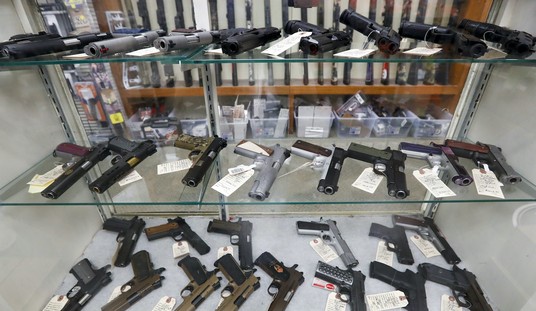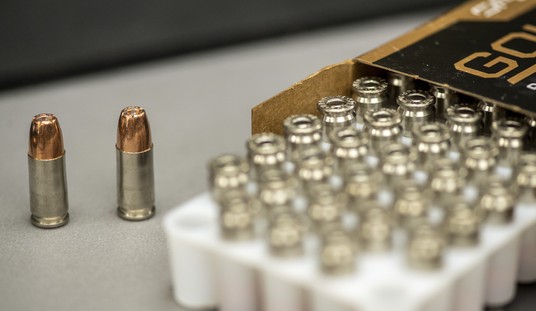America’s currently going through a spasm of political violence the likes of which haven’t been seen since the late 1960’s, but our history is one that has regularly witnessed riots and the disastrous effects of the madness of crowds, though these tales rarely appear in the actual history books we read in school. I’m an unabashed history nerd, and I’ve been doing quite a bit of reading lately about the periods in American history where the social fabric has frayed; the tumultous elections of 1800, growing antagonism between the North and South in the decades before the Civil War, the violence of the Reconstruction-era South, and labor unrest in the late 1800s and 1930s were all times when many of our American forefathers mobbed up and tried to destroy their enemies, or at least their property.
One such riot took place in Baltimore in August of 1835. Almost a year and a half earlier, the Bank of Maryland, a venerable institution that had been around since 1790, had suddenly failed. For months there was nothing but silence from bank officials, but the topic was hotly debated and blamed thrown around in a series of increasingly vitriolic pamphlets. On August 6th, three days after a particularly inflammatory missive hit the news stands, several hundred people gathered outside the homes two of the bank directors.
Reverdy Johnson and John Glenn had their windows smashed that evening, but Mayor Jesse Hunt managed to disperse the crowd before any more damage was done. Friday dawned peaceful, but with rumors of unrest flowing like water through the city’s neighborhoods tensions in the city climbed along with the temperature throughout the hot August day. The Niles Weekly Register reported what happened as evening approached.
The crowd was much larger than the proceeding night, and more panes of glass were broken. They were addressed by the mayor, and by General W. Jones, of Washington, who happened to be in the city. They were respectfully listened to, and the crowd dispersed around 11 o’clock.
Again, so far, mostly so good. A few broken windows, but a group of people still willing to listen to the voice of reason, if not authority. Still, all Saturday there were more rumors of a “serious attack” on the home of Reverdy Johnson, and Mayor Hunt “called together a considerable number of citizens” to station themselves along the streets leading to Johnson’s home. Once again, from the Niles Weekly Register:
By dark, multitudes of people had assembled. The principal point of concentration, at this time, was Baltimore Street at the intersection of North Calvert, which leads to [Monument Square]. Here the crowds make frequent rushes upon the guard. Brickbats and stones were showered upon the guard like hail, and ultimately by the guard returned. A number of the latter were severely bruised and wounded. They however kept their posts.
Since the rioters couldn’t get to Reverdy Johnson’s fine home, they marched off to tear down the home of his colleague, John Glenn. Mayor Hunt hadn’t provided for any protection for Glenn’s home, and by the time several of the mayor’s armed citizens showed up, the house was already being cleared out by rioters and looters.
Early Sunday morning, a group of several dozen armed citizens confronted rioters on Charles Street. The rioters threw bricks and cobblestones. The mayor’s guard fired back. The local press estimated that eight people were killed and seriously wounded. The response from the mob was one of white-hot fury, and Mayor Hunt, hoping to reduce tensions in the city, didn’t call on any armed citizens to defend Reverdy Johnson’s home on Sunday evening. As the Niles Weekly Register emphatically noted in its report, “there was no no opposition.”
It was supposed that several thousand people were spectators of the scene. The house was soon entered, and its furniture, a very extensive law library, and all its contents were cast forth, and a bonfire made of them in front of the house. The whole interior of the house was torn out and cast upon the burning pile.
As some of the crowd remained to dismantle the Johnson home brick by brick, others moved on, first to the home of bank trustee John Morris. and then to Mayor Jesse Hunt’s own home. Days earlier he had been able to convince the crowds to go home after breaking just a few windows. Now they were intent on destroying his own home, and they did. Another bonfire was built with Hunt’s possessions, and the crowd quickly moved on destroy a half-dozen other homes and businesses that in most cases were connected to directors of the bank.
On Monday, the citizens of Baltimore decided they’d had enough. From the Niles Weekly Register:
It now appeared that the people were called upon to defend, not only their property, butt also their lives- and it was manifest that there was a general, but gloomy resolution entertained to do both. Things had reverted to their original elements- there was no law, and a head was wanted to to bring order out of confusion.
A crowd of Baltimoreans gathered at the city’s Merchant Exchange building cheered when Mayor Jesse Hunt resigned his position, and they overwhelmingly named 85-year old retired general Samuel Smith to lead the city. Smith was one of the most respected members of the community and a former Continental and U.S. soldier, as well as a former mayor of Baltimore and a U.S. Senator from Maryland. He told the assembled crowd that the “time for resolving had passed away, and that for action had arrived.”
Around three thousand citizens gathered arms and mustered at City Hall along with the fire companies, in case rioters decided to start any more bonfires that might lead to homes or businesses burning. As it turns out, however, there were no riots that evening. “The streets were as quiet as the grave,” reported the Weekly Register, “except for the heavy tread of detachments of armed men to reconnoiter its different parts.”
Peace was once again at hand, but there are two theories as to why the riots didn’t continue on Monday evening. Was it because the riots had already burned themselves out in their orgy of destruction over the two previous evenings? Had the rioters sufficiently targeted the directors of the failed Bank of Maryland and saw no more need of rioting? Or did the armed citizens stop rioters from assembling, seeing the overwhelming numbers against them and realizing that any more violence would likely lead to more loss of life?
What would have happened had the armed citizens not assembled under General Smith and fanned out to protect the city? Would the streets still have been peaceful, or would there have been more homes destroyed? Would the violence have escalated from property damage to pouring boiling tar on the bank directors, or would the rioters have stayed in regardless, their energies spent and their grievances redressed, at least somewhat, by the extrajudicial vengeance they’d wrought on the bank directors?
I suspect that both the sheer number of armed citizens and the fact that the mob’s violence had, to that point, been focused almost exclusively on the bank directors (one hardware store was broken into, but the mob left after the owner pointed out he had nothing to do with the bank) played a role in the sudden end to the growing tumult. If the rioters had wanted, they certainly could have tried to return to Reverdy Johnson’s home, now empty of its possessions, to burn it down, along with the homes of the other directors, but they decided against that. It stands to reason that the presence of thousands of armed citizens under the command of the city’s most respected citizen would have been a major influence on their decision to stand down.
The anti-bank rioters also decided not to arm themselves and take on their neighbors, and avoided a full scale battle of Baltimore residents fighting each other in the streets. Calm prevailed, and eventually the story even had a happy ending for most. Creditors were eventually repaid, and Reverdy Johnson was able to rebuild his possessions and even his career, going on to serve as a U.S. Senator and Attorney General.
The Baltimore Bank Riot may not bear much resemblance to our current unrest, but it still offers a window into a point in history where local leaders were forced to answer questions about how much force to use to prevent unrest, the loss of property versus the loss of life, an ineffectual response from the mayor, and armed citizens who came together to protect a city besieged by unrest. In that sense, we can at least hear some echoes of the Baltimore riots and the public’s response when we listen today to armed citizens talk about protecting their neighborhoods in Minneapolis, Mayor Jacob Frey being booed and jeered by a crowd of residents, and the crackle of flames as the city’s Third Precinct burned.









Join the conversation as a VIP Member